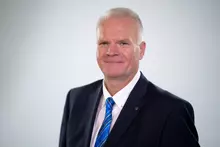Digital transparency for AES


Jörg Scheer
Position: Managing Director HARTING Customised Solutions
- Company: HARTING Technology Group
Speaking about the All Electric Society (AES), we often encounter the concept and term of two central lifelines: energy and data. These two resources are not only indispensable for the operation of electrified systems, but also for the optimisation and automation of industrial processes. While the generation, storage and use of renewable energies are considered the foundation of an ecologically sustainable energy supply, it is easy to underestimate the role of data. In an increasingly digitalised present, however, it is becoming clear that "data" is an absolutely indispensable complement to the lifeline of "power".
Energy and data: a synergistic relationship
In the all electric society, the integration of energy and data represents a decisive factor for the efficiency in the generation, storage, distribution and use of energy that is of paramount importance. I am convinced that everything that can be electrified will be electrified. But without the underlying data, we will not be able to fully exploit the efficiency of electrified systems.
Data enables the real-time monitoring and control of processes, which not only optimises electricity consumption but also creates new business models.
Connectivity is increasingly becoming the decisive factor with regard to the architecture of the all-electric society. The future envisages traditionally isolated sectors – such as industry, energy supply and mobility – being networked by way of intelligent data communication. The future of connectivity will be determined by intuitive interfaces and standardised protocols.
The challenges of sector coupling
Sector coupling has the potential to significantly boost the efficiency of energy use. At the same time, we are facing major challenges in its practical implementation. The standardisation of communication protocols and interfaces presents the major obstacle. Currently, many systems and applications are equipped with proprietary protocols that impede seamless communication. It is crucial that the relevant players agree on cross-sector standards in order to maximise interoperability.
These hurdles are particularly noticeable in the area of data. While physical energy connections are often diverse and individually designed, data interfaces need to be standardised. It must be possible for us to use uniform protocols regardless of whether we are working in the private or professional sphere.
Physical infrastructure as the foundation
In the implementation of sector coupling, however, the existing physical infrastructure must not be neglected. The expansion of energy networks will play a pivotal role in the upcoming years, as energy demand is expected to double by 2050. Consequently, energy networks must be developed in such a way that they not only meet rising demand but also enable efficient distribution.
At the same time, better data infrastructures will also be required. In particular, the expansion of fibre optic networks is essential so as to ensure data transmission with the necessary bandwidth, speed and stability for sector coupling. This infrastructure must be adapted to the new requirements of digitalisation in order to enable real-time data processing, while progress in this area varies from region to region. Some countries already have very advanced infrastructure in place, while others still have some catching up to do.
Connectivity solutions for the key single connection
New connectivity solutions are required to guarantee the adaptability of data infrastructures – meaning that modular and pluggable systems will play a vital role in the future. The trend is towards a uniform standard that not only increases flexibility but also usability. Single Pair Ethernet (SPE) is a promising solution that enables energy and data to be transmitted by way of a single pair of wires.
Ideal: Standard(s)
Ideal: Standard(s)
In this context, I would like to emphasise once again how important the standardisation of communication protocols and open interfaces is for the realisation of the All Electric Society. Without uniform protocols, integration and therefore the efficiency of sector coupling will be tremendously arduous. The challenges in this area not only include technical aspects, but also political and economic conditions that can hinder progress. The All Electric Society, however, is not a distant vision of the future, but a reality that is already emerging. Companies and stakeholders in various sectors must take and master the challenges of standardising and implementing common protocols in order to reap the benefits of sector coupling and elevate the efficiency of their systems.
The Ethernet protocol standard for data is particularly promising – providing the foundation for robust data communication combined with the flexibility and compatibility to optimally link sectors with each other.
Consequently, the symbiosis of energy and data represents the key to a sustainable future – the All Electric Society. Time is critical and pressing, and the only way forward will be through close cooperation and courageous innovation on the part of all parties and protagonists involved.



